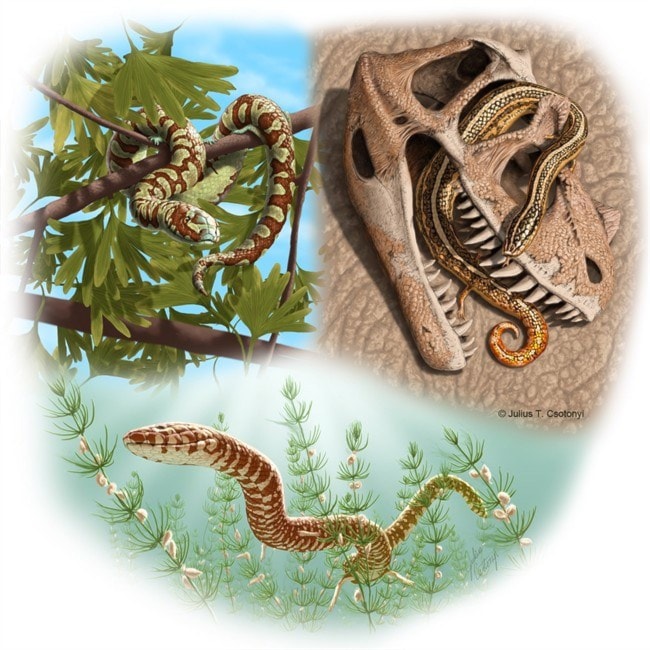By Bob Weber, The Canadian Press
EDMONTON - Sometimes, the best fossil hunting is done indoors.
The chance discovery of a misidentified fossil in a London museum has led a University of Alberta paleontologist to push back the date of the earliest known snake by almost 70 million years – and has kicked off his quest for the first four-legged slitherer.
"Snakes are much older and more complex than we thought," said Michael Caldwell, lead author of a paper published Tuesday in the journal Nature.
Scientists say what makes a snake a snake isn't the long, legless, wriggly body. It's the skull.
"Snakeness has everything to do with feeding strategy," Caldwell said.
Lizards have rigid skulls that are firmly affixed to the rest of the skeleton. Snakes, which often need to swallow things bigger than their heads, are built differently.
"The skull of a snake is a whole series of small, loosely interacting elements," Caldwell explained. "The most rigid parts protect the brain case, but everything else slides around that in order to assist in the characteristic snake feeding mechanics."
In 2003, Caldwell and a student were examining some lizard fossils from Colorado, England and Portugal in London's Natural History Museum when he saw just that sort of skull structure.
"As I pulled the specimen out of the box and put it under the microscope ... I realized, 'Wow, this thing is not just a lizard, it's also a snake.'"
The specimen had been misidentified – not unusual in a field where samples are scarce, incomplete and often damaged.
"It's as common as rain in our business."
The fossils were almost 170 million years old, far older than any previously known snake.
And because they show such clear snake features, there must be even older ones out there, Caldwell said. That means snakes are one of evolution's longest survivors.
"The reigning paradigm had been that they were a relatively recent innovation in the evolution of lizards," he said. "Here it looks like they're going right back to the breakup of Pangaea," the primordial supercontinent that long ago broke up into today's land masses.
Not much else can be said for sure about these snakes from a few pieces of skull and vertebrae. They were less than a metre long and had teeth much like a modern python's, suggesting a similar feeding strategy.
But because the previously oldest known snake had vestigial rear legs, Caldwell guesses his rediscovered snakes had all four.
"I'm sure these guys were four-legged. If 100 million years ago we still had hind limbs, then 70 million years before that, I can't imagine they didn't have four limbs. No doubt in my mind.
"Can I substantiate that? Nope, not right now. Am I looking for it?
"Yes, I am."
"The four-legged snake will make a great future project."
Stay tuned, said Caldwell. There's lots more museum collections out there that are going to get a second look.
"There are some good things out there.
"I've got a lot of stuff that'll be coming out in print in the next little while. The last decade of working on this question hasn't just resulted in this single project."



